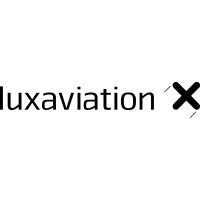Two Ministers, VIPs, BBGA Director General Lindsey Oliver, students and apprentices from Exeter College and the former Flybe Aviation Academy, joined representatives from the 2ZERO consortium at the XLR Jet Centre in Exeter last week to welcome Ampaire’s hybrid electric EEL. Its mission, operating short hops to Cornwall Newquay Airport, was to demonstrate the technology that will eventually transfer to short-haul 9 to 18-seat regional airline travel – a significant step toward low carbon flight. “It is great to see investment and innovation here starting in regional aviation,” commented Pete Downes, MD of Cornwall Newquay Airport. “Significant lower cost operations and lower emissions is a sweet spot for regional airlines,” added Paul Simmons, COO of Jersey based regional airline Blue Islands.
The demonstrator showcasing in Exeter was a retrofitted Cessna 337 Skymaster with a motor at the front, batteries below in a fairing and piston engine at the rear. Ampaire Test Pilot Elliot Seguin, declared the aircraft very easy to fly on a combination of battery and conventional power. He broke Ampaire’s own record for hybrid/electric flight the day before the formal presentation, flying the EEL 418 miles to Exeter from Perth in Scotland.
Business Minister Lord Callanan, who attended the event, together with Aviation Minister Robert Courts, thanked the UK CAA for the role it played in aiding these important trials, working with industry to ensure the UK is an attractive location to develop new aviation technology safely and securely.
“My hope is that the Government, working with industry, will continue to work together to drive forward the innovations that will make electric, hybrid and other types of low emission flight a reality that will allow the technology to work and for us to use in our everyday lives.”
Dr Susan Ying, Senior VP Global Operations did something very unusual after her formal presentation to the 60 plus delegates in the FBO. Having explained how battery driven flight is going to save a lot of money and deliver cost savings of around 30% on short haul flights, she invited Ampaire intern Triona Moore, a Queen’s University, Belfast aerospace engineer under-graduate to come up and detail the technology.
The aircraft is only part of the drive to sustainability and Ampaire’s 2ZERO partners Exeter and Newquay Airports are helping the consortium understand this. The eco system challenge must be being able to recharge batteries during fast ground turnarounds, which in small airfields on Scottish islands (highlighted partner Loganair) can be four to 10 minutes. There are three possible solutions to make recharging electric aircraft efficient and economically viable. Installing direct charging stations using renewable energy sources to connect directly with the aircraft; charging sets of batteries that would then be used to recharge aircraft batteries and swiftly swapping out batteries while aircraft are on the ground.
As if on cue, a Skybus Twin Otter headed for Land’s End taxied by. An Eco Otter with proven hybrid architecture is a key goal for the 2ZERO partners. Ampaire’s engineering team, led by Prof Andrew Rae, is also working on plans to design a series of batteries specifically for aviation use rather than depending on hardware developed for road vehicles. “We can’t just build for domestic use,” said Susan Ying. “We are looking at a potential US$400 billion market here. We must build to global standards. What works for the UK, must work for the whole world.”



